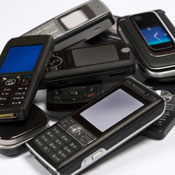Study: Tech can overwhelm twentysomethings, but not enough to go offline


According to a study released this week by the Pew Internet and American Life Project, a group called "Ambivalent Networkers" -- primarily male and in their late 20s, who have largely grown up with the Internet at their disposal -- can just get overwhelmed by it all.
In the study, Pew examined American adults' gadgets, activities and attitudes toward technology. About 60 percent of respondents didn't have significant attachments to mobile devices, either because they didn't have such gadgets or because they were fine with desktop PCs.
However, nearly 40 percent did say they were glued to their mobile devices, with the Ambivalent Networkers making up a fifth of that group.
The problem for Ambivalent Networkers is that they believe in taking breaks from the technology, but aren't willing to go off the grid to do so.
On the other hand, another one-fifth of mobile-attached users feel quite differently: named "Digital Collaborators," they are comfortable and enthusiastic about tech, and tend to be male, in their late 30s, and have jobs that require collaboration across distance.
Here's Pew's breakdown of the tech personality types, with a little help from Jacqui Cheng at Ars Technica:
- Digital Collaborators have the most gadgets out of the five groups, and use those assets to work and share their creations with others.
- Media Movers are more likely to create "information nuggets," like digital photos, and pass them on immediately.
- Roving Nodes get the most out of basic applications, like e-mail and texting, and "find them great for arranging the logistics of their lives." This group makes up the largest portion of the adult population at nine percent.
- Ambivalent Networkers have wholly embraced mobile devices and integrated them into their social lives. This group is significantly less likely to watch traditional TV on a daily basis than the rest of the adult population (24%, versus 79% of all adults). Interestingly, 91 percent of this group relies on their cell phones for all of their calls.
- Mobile Newbies are exactly as stated.
More data from the report:
- Some 39% of Americans have positive/improving attitudes about their mobile communication devices, which draws them to engage with other wireless and wired platforms.
- Mobile connectivity is now a powerful differentiator among technology users, and those who plug in on-the-go are more active online than those who use wires.
- 14% of Americans are off the grid entirely.
- 8% of adults use mobile devices and broadband platforms for continual information exchange to collaborate with their social networks.
- 7% of adults actively use mobile devices and social networking tool, yet are ambivalent about all the connectivity.
- 8% of Americans find mobility lighting their information pathways, but have comparatively few tech assets at home.
- 16% of adults are "active conduits of content and information"
- 61% are anchored to stationary media; though many have broadband and cell phones, coping with access is often too much for them.